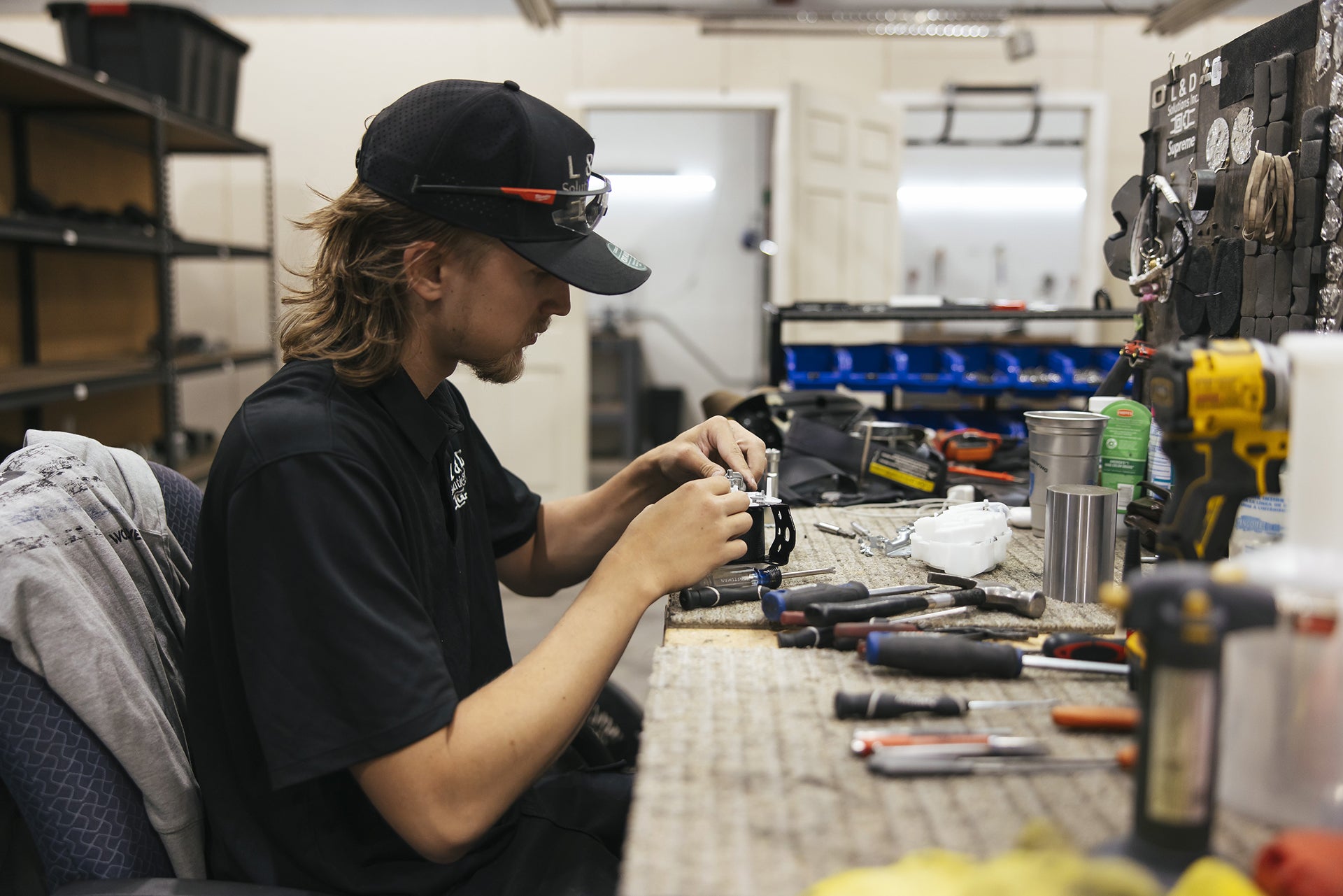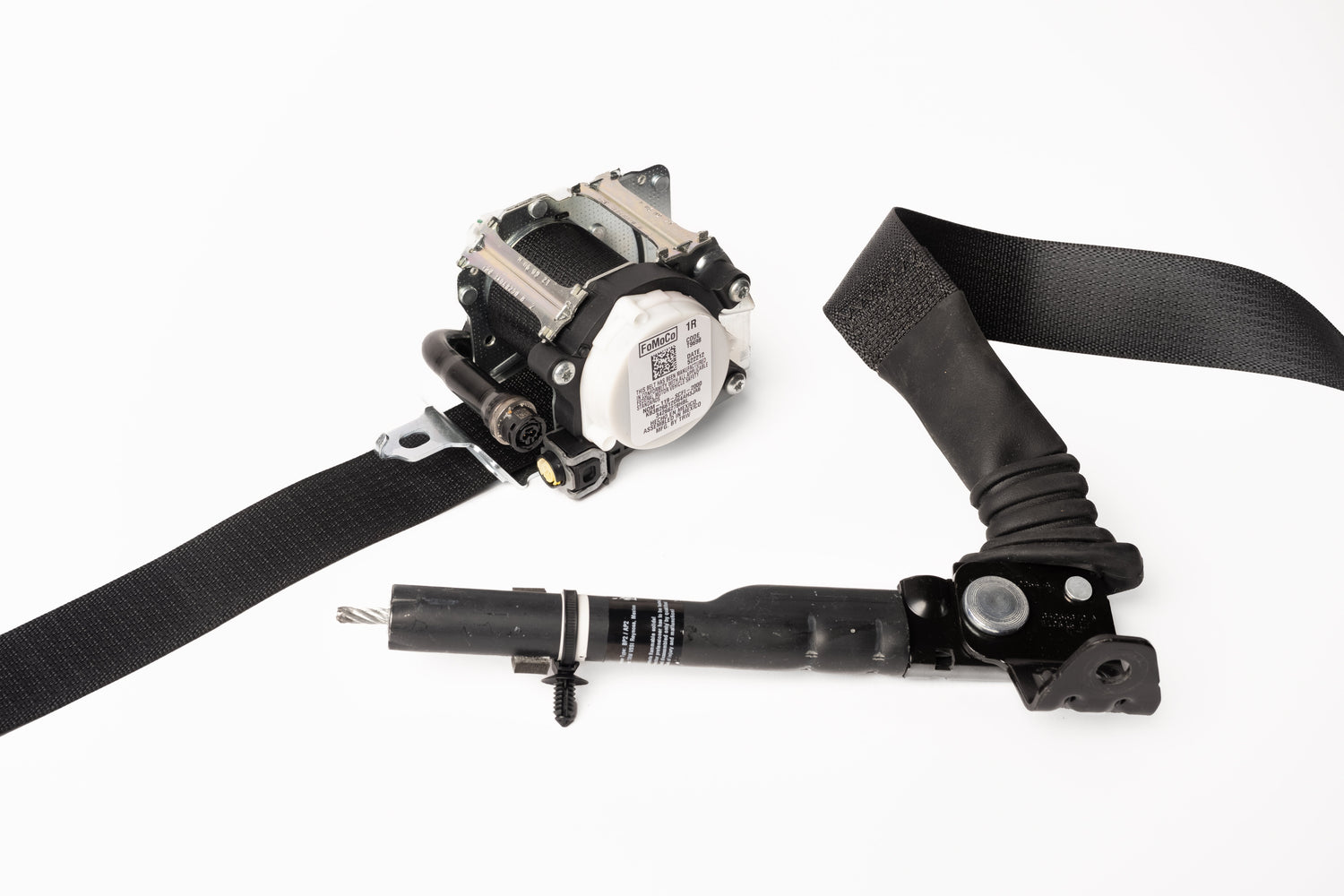A broken seat belt isn’t something you should ignore.
It might seem like a small thing at first. Maybe the belt doesn’t retract as quickly. Or it’s stuck. Or the warning light on your dash just won’t go away.
But here’s the deal: your seat belt is your number one safety feature in any vehicle. It’s the first thing protecting you and your passengers during a crash. So when it stops working properly, it needs attention, fast.
At L&D Solutions, we repair and rebuild hundreds of seat belts every month. We’ve seen it all. This guide breaks down exactly what causes a seat belt to fail, how to tell what’s wrong, and what you can do about it, even if you’re not a mechanic.
Why Do Seat Belts Break in the First Place?
Most people assume seat belts last forever. They don’t.
Seat belts wear down over time, just like brakes, tires, or suspension. And if your car’s ever been in an accident, even a small one, your seat belt might have already deployed its pretensioner, a small device designed to tighten the belt during a crash.
Here are the most common reasons your seat belt might stop working:
Common Issues:
- Stuck or slow retraction – usually a weak or jammed spring in the retractor
- Webbing damage – fraying, cuts, pet bites, sun damage, or general wear
- Buckle won’t latch or release – gunk inside the mechanism or broken parts
- Crash deployment – pretensioners lock up after accidents and must be rebuilt
- Airbag/seat belt light on – internal fault in the SRS (Supplemental Restraint System)
If any of these sound familiar, keep reading. You might be able to fix it, or send it to someone who can.
Step-by-Step: How to Check What’s Actually Wrong
You don’t need to be a mechanic to get a sense of what’s going on with your seat belt.
Here’s a simple way to figure out the problem before calling anyone:
1. Look at the Webbing
Pull the belt all the way out. Is the fabric torn? Burnt? Frayed at the edges?
If so, it’s no longer safe to use. Webbing should be strong, clean, and flexible. Even if it just looks worn, it’s worth replacing.
2. Test the Retractor
Let the belt slowly slide back. If it’s slow, sticky, or not retracting at all, the internal spring may be worn or the belt is caught up inside the spool. This is super common in older cars.
3. Check the Buckle
Click the buckle in and out a few times. If it doesn’t latch securely or feels loose, it might need a deep clean, or a full replacement.
4. Was There a Crash?
If your car’s been in an accident (even just a fender-bender), your seat belt pretensioner probably deployed. That means the retractor unit is locked, and the airbag light might be on. It won’t go away until the seat belt is repaired or replaced, and the crash data is reset.
Can You Fix It Yourself?
It depends on what’s wrong.
Easy DIY Fixes:
- Clean the buckle: Sometimes all it takes is a can of compressed air or a toothpick to get crumbs out of the mechanism.
- Untwist the webbing: If your belt is stuck because it’s twisted behind the panel, you can usually fix this by removing the trim and gently guiding it back into place.
Things You Shouldn’t DIY:
- Webbing replacement
- Pretensioner rebuild
- SRS module reset
- Anything post-accident
These repairs require special tools, experience, and safety precautions. You’re dealing with airbag systems and explosive devices in pretensioners, not the kind of thing you want to experiment with at home.
What Happens When You Send It to L&D Solutions?
When a customer ships us a broken seat belt, here’s what we do:
- Inspect the unit
- Replace damaged or worn components
- Rebuild the pretensioner if it deployed
- Replace webbing if requested (we have OEM color matches!)
- Test the mechanism for retraction and locking
- Reset the crash data if needed
We return it ready to install, good as new, and backed by a lifetime warranty.
Most shops just replace the entire unit. That can cost you $300–$600 per belt. We rebuild yours for a fraction of that price and get it back to you within 24–48 hours of receiving it.

How Much Does It Cost?
Here’s a breakdown of our most common services:
| Service | Price Range |
|---|---|
| Retractor/Pretensioner Rebuild | $69–$129 |
| Webbing Replacement (Single Belt) | $79–$100 |
| Buckle Repair | $50–$75 |
| Airbag Light Crash Code Reset | $54.99–$240 |
| Shipping (Fast & Insured) | Included in most orders |
Need a custom color? We’ve got over a dozen webbing colors in stock.
Real-World Examples from Our Shop
- A customer in Texas sent us a 2018 Chevy Tahoe seat belt that wouldn’t retract. We found that the pretensioner had fired in a minor rear-end crash, something the dealership didn’t even tell them. We rebuilt it for $109. Dealer quoted $480.
- A client from New York mailed in three belts from a Honda Accord after a crash. All pretensioners were locked and one had a chewed-up webbing from a dog. We replaced everything and shipped it back in 2 business days.
- A BMW owner needed red custom webbing to match a custom interior. Done. OEM finish, fully compliant, and safer than used junkyard parts.
Still Driving with a Broken Belt?
Please don’t.
Your airbags, brakes, and sensors all work together, but your seat belt is the foundation of it all. Without a working belt, the rest won’t protect you the way they should.
If the airbag light’s on or the belt’s not working right, take action.
Ready to Get It Fixed?
At L&D Solutions, we specialize in fast, safe, OEM-quality seat belt repairs. Whether you’re dealing with locked retractors, frayed webbing, or just want to refresh your interior, we’ve got you covered.
✅ Rebuilds
✅ Color matches
✅ Lifetime warranty
✅ Crash code reset
✅ Fast turnaround
Send it in. Get it back safe. Drive with peace of mind.




Leave a comment
This site is protected by hCaptcha and the hCaptcha Privacy Policy and Terms of Service apply.